Life on the olive farm is a seasonal tapestry woven by nature, and we raise our olives according to its rhythms. All around the farm, we enjoy spending time with the animals and plants that share this journey with us.
A Year on the Olive Farm
March
As the weather turns warmer, horsetails peek up out of the ground and the sumomo plum blossoms begin to open.
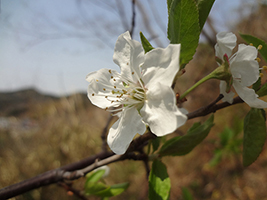
Sumomo plum 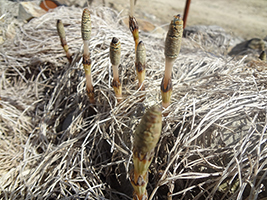
Horsetails 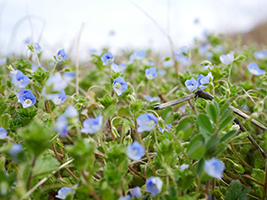
Veronica persica 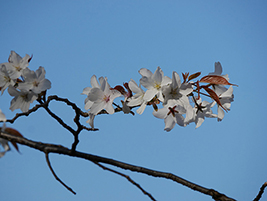
Cherry
Olive trees store nutrients in their leaves to overwinter, so once the weather turns warm, we carefully begin to prune the trees for new growth; at the latest we finish by late April. We also fertilize and plant new trees at this time. We tend to fertilize in late-February or early March because we leave vegetation to grow wild in the grove, as it will in turn become fertilizer later in the year.
Just as the olive trees begin new growth, all the pests that can inhibit it also become active. We do our first protective spray against the great enemy, the olive weevil, in late March or early April.
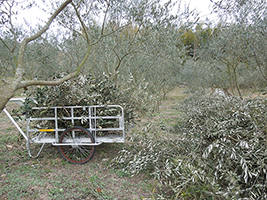
Pruning 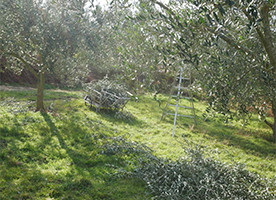
Pruning 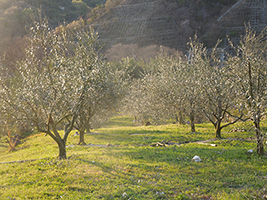
Pruning 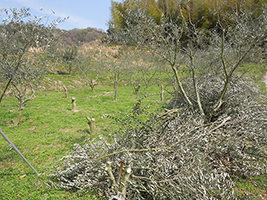
Pruning
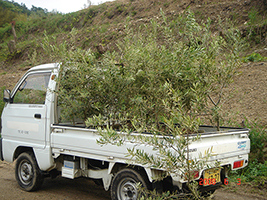
Planting 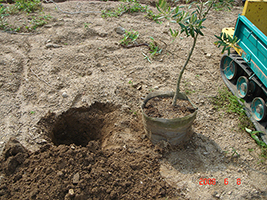
Planting 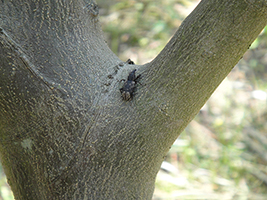
Adult olive weevil 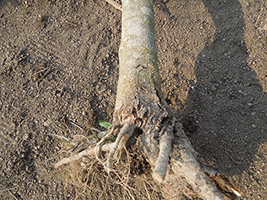
Damage from weevils
April
The sunny days grow longer, and with the right amount of rain, the grasses spring up high and it’s time for weeding. It’s also when the bamboo shoots and warabi bracken start to show their faces as well.
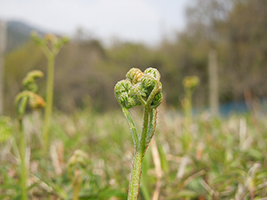
Warabi bracken 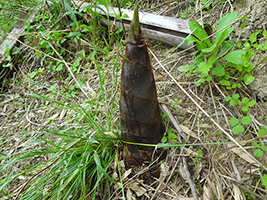
Bamboo shoot 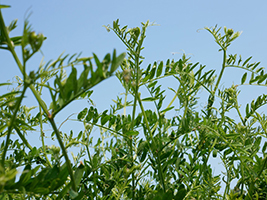
Common Vetch 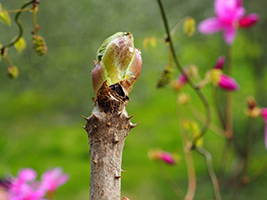
Cod sprouts
We break out the weed whackers and mowers, and begin cleaning up the olive groves. While cleaning around the trees by hand, we check each one for evidence of weevil infestation or damage.
At the same time, last year’s olive leaves turn to a dark green, and the foliage on the new branches turn into a beautiful light yellow-green. These color changes indicate healthy olive trees.
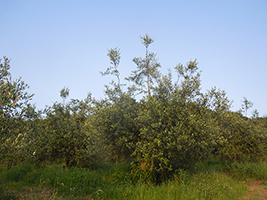
Weeding 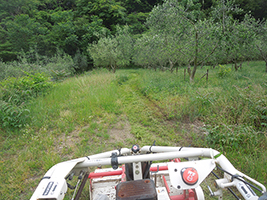
Weeding 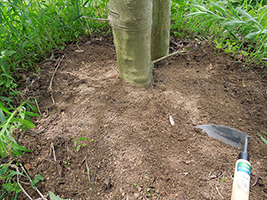
Weeding 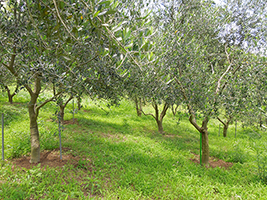
Weeding
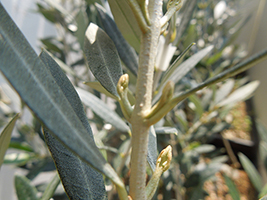
New branches and buds 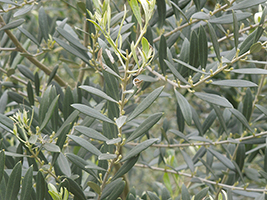
New branches and buds 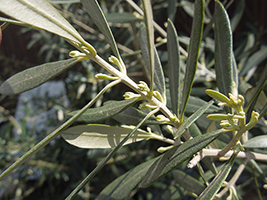
New branches and buds 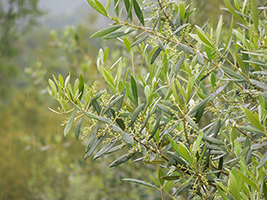
New branches and buds
May
From May, the weather turns hotter and we change our long-sleeve work wear for short. The UV-rays also turn punishing, but there are beautiful changes to look forward to as well, like wild strawberries.
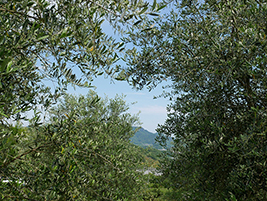
Olive Groves in May 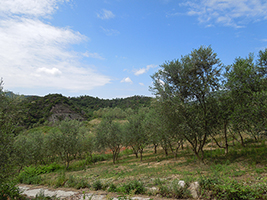
Olive Groves in May 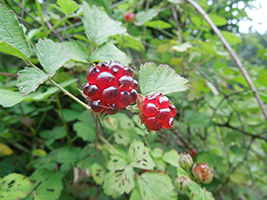
Wild Strawberries 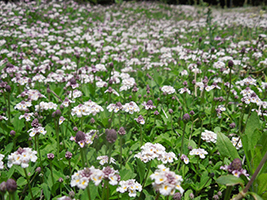
Crepia,cover plant for olive groves
As the season passes, flower buds get fuller, and we all look forward to the coming blossoms. The spring rains taper off and as dry days continue, we have to get out the watering tubes to provide necessary moisture to the trees. For trees still in planters, it is especially important to make sure that the soil does not dry out.
Depending on the variety, olive blossoms begin to open in late May or early June, give or take a week. When blossoming happens close to the start of the rainy season, blossoms can get damaged and this affects our harvest.
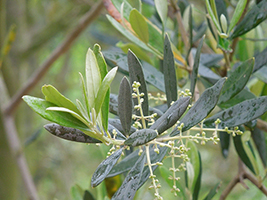
Buds 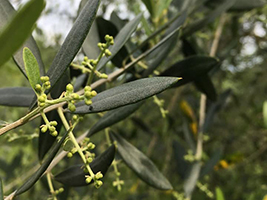
Buds 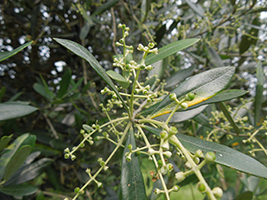
Buds 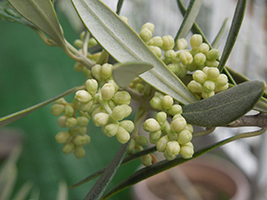
Buds
June
As the cloudy days of the rainy season linger on, we start planting our rice fields in between working in the groves. At the end of June, the sumomo plums also start to bear fruit.
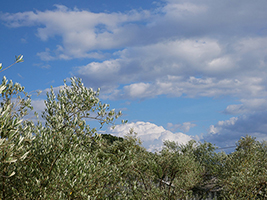
Olive Grove in June 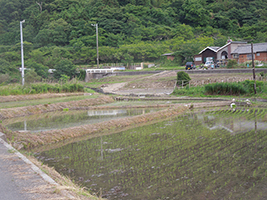
Rice planting 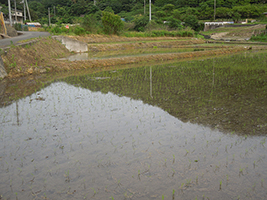
Rice planting 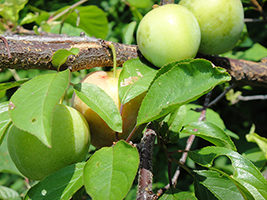
Plum
Once trees blossom in earnest, it’s important to monitor them carefully as each flower will eventually grow into a fruit. Watering becomes critical at this stage. Keeping an eye on precipitation, we also manually water as necessary to keep trees happy. In early July, the rainy season can turn nasty with typhoons bringing torrential rains and strong winds. To reduce the risk of fallen trees, we carefully check drainage and use stakes to give trees added support where necessary.
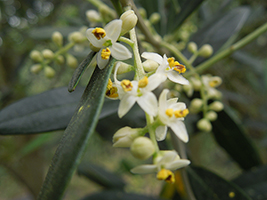
Olive Blossoms 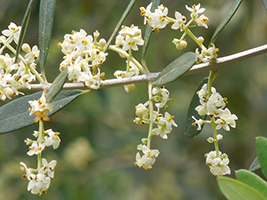
Olive Blossoms 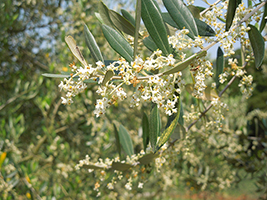
Olive Blossoms 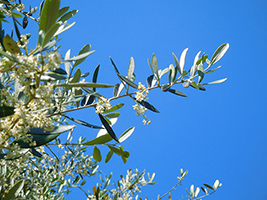
Olive Blossoms
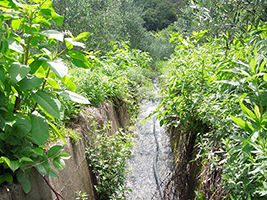
Typhoons & Torrential Rains 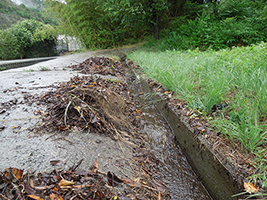
Typhoons & Torrential Rains 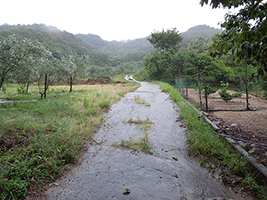
Typhoons & Torrential Rains 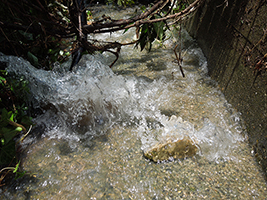
Typhoons & Torrential Rains
July & August
Once the rainy season ends, the sweltering summer is upon us. Far off thunderheads frame the sky around the olive farm.
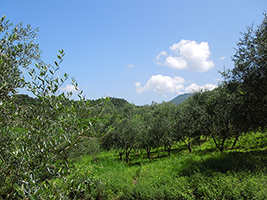
Olive grove in July 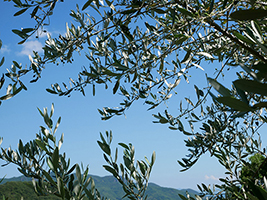
Olive grove in July 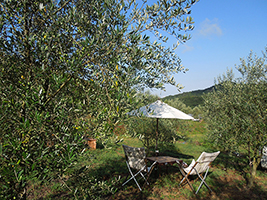
Under the Parasol 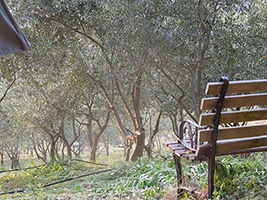
Rest area
Fighting against the heat, we start our second round of cutting back vegetation. Once each grove is finished, we set up irrigation tubing and start watering.
The infant olive fruits begin to grow larger and stand out on the branches. If we spot a brown, blemished olive fruit we quickly pinch it off. These fruits contain anthrax bacteria and will contaminate neighboring olives. Mid-July, we spray a second time against olive weevils.
From the end of June to the end of September, it is typhoon season in Japan so we do our best to protect the groves from damage at this time.
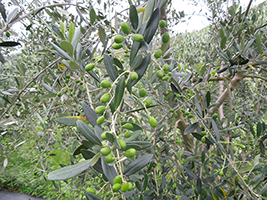
Infant olive fruits growing bigger 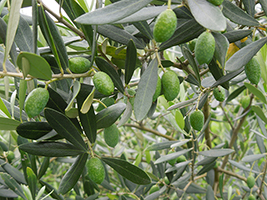
Infant olive fruits growing bigger 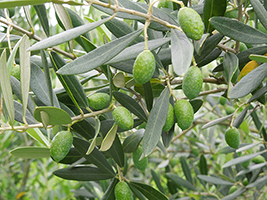
Infant olive fruits growing bigger 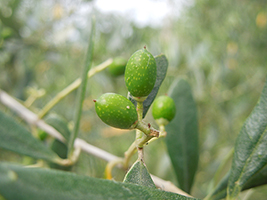
Infant olive fruits growing bigger
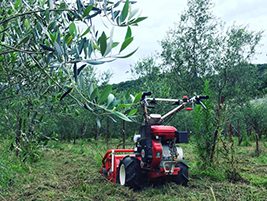
Mowing in summer 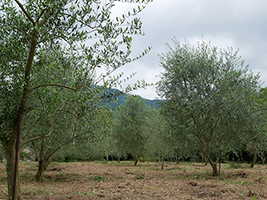
Grove after mowing 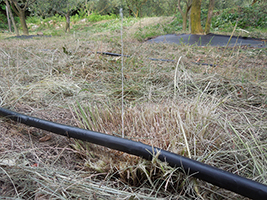
Irrigation tubing 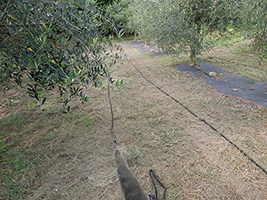
Irrigation tubing
September
Perhaps the hottest time of year, we begin harvest preparations. We also get the oil extracting and cleaning areas ready.
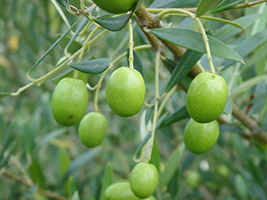
Nevadillo Blanco fruits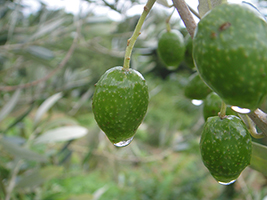
Mission olives, still a little green 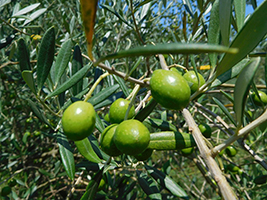
Manzanillo fruits 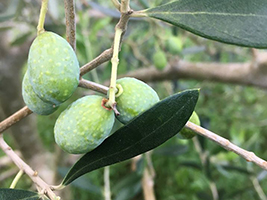
Correggiola fruits
From late August into September, we pack up the irrigation tubes and do our third weeding. We also do our 3rd spray against weevils. We must take care with saplings to protect them against damage from wood-borers as well.
In the oil extracting area, we clean out our stainless tanks and conduct trial runs of our machinery. We also start to set up our olive cleaning area, where we will carefully select harvested fruits.
It’s critical to pick olives at exactly the right time, so we carefully observe the ripening fruits and choose where to start. We prep our containers and ladders and (usually in mid- to late September, depending on the variety) begin the harvest with the trees that are ready to go.
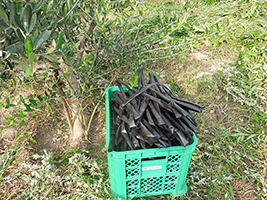
Irrigation hoses all packed up 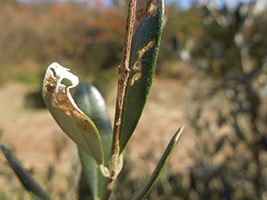
Damage from aphids 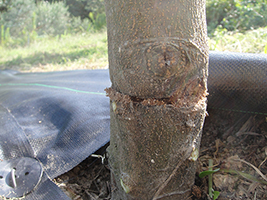
Damage from Komori moths 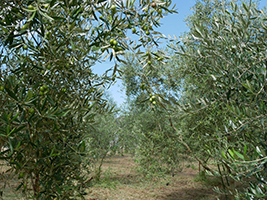
Mowing just before harvest
October & November
With nature’s blessing, the autumn brings a bountiful harvest. We have a few lemon and persimmon trees that give us fruit as well. Though we are busy with olives, we harvest rice from Minna no Tanbo in mid-October too.
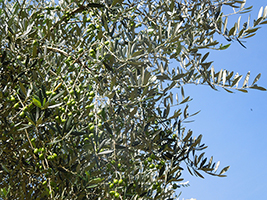
A full Mission olive tree 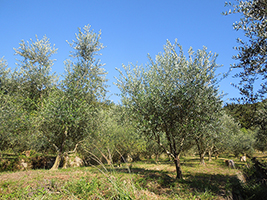
A full Lucca olive tree 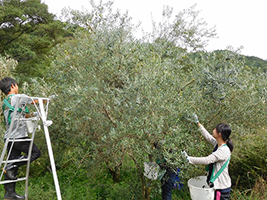
Harvesting 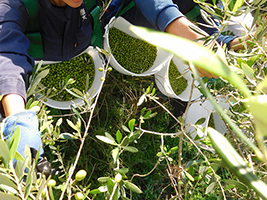
Harvesting of Lucca
This is the busiest season of the year, and farmers come from all over Japan to help us process our harvest. The extracting and cleaning areas are abuzz with activity, and every day, we decide whether to pick olives for oil or preserving based on the weather. Once we have picked enough, we get started on processing the olives according to their purpose.
Please take a look at the Olive Oil Making page for further details on production.
The harvest winds down in mid-November, and then we get to our lemon and persimmon trees that wait patiently for us to finish.
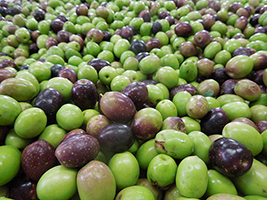
Freshly-picked Missions 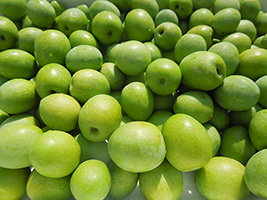
Freshly-picked Manzanillas 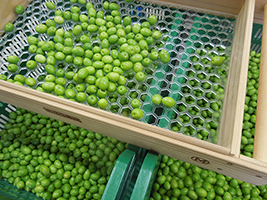
Picking over Missions for quality 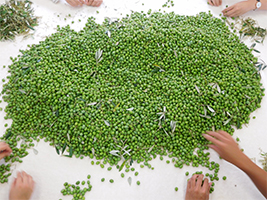
Picking over Missions for quality
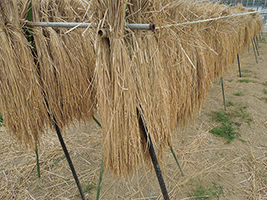
Rice drying on racks 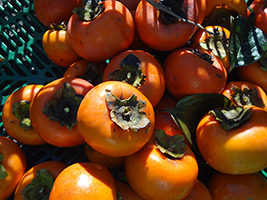
Freshly-picked persimmons 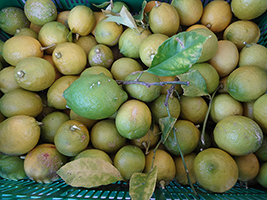
Freshly-picked lemon 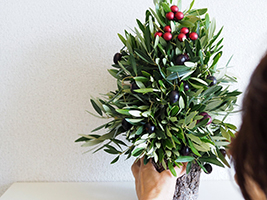
Making X’mas tree with olive leaves, brunch, etc.
December to February
Once we get into December, the days grow short and chilly, and the olive trees prepare themselves for winter.
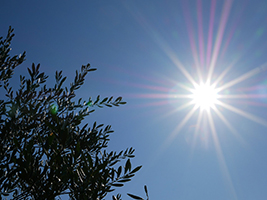
Olive Groves in December 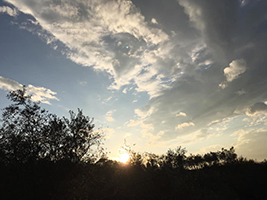
Olive Groves in December 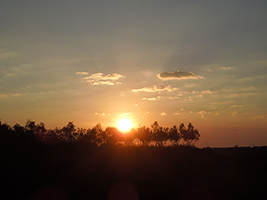
Sunset in winter 
Olives in the snow
The olive trees fall dormant as temperatures drop and they enter their overwintering phase. When they are still young, their trunks are active, so we will change ties and stakes for those that still need them.
Though one would imagine winter is not a busy time for us, we still apply manure and fertilizer, as well as ground cover sheets, in the groves. We also plant the seeds for next year’s barley crop. There is one yuzu tree in our Teranoshita grove, so we pick them at winter solstice.
Late January and early February brings the first asparagus buds, and plum blossoms add beauty and color to the cold winter days.
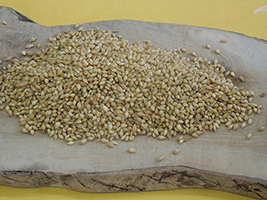
Barley 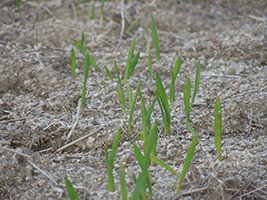
Barley sprouts 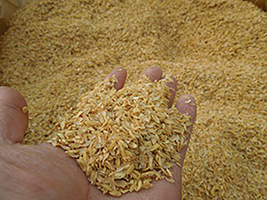
Rice husks 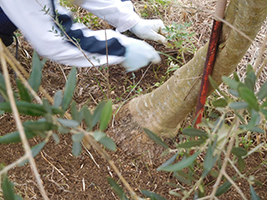
Weeding around trees manually
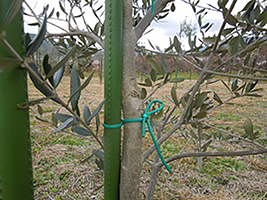
Retying support stakes 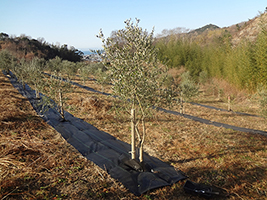
Laying down ground cover sheeting 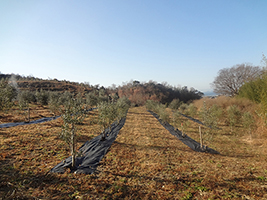
Laying down ground cover sheeting 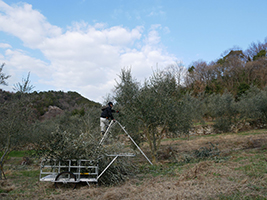
Pruning work
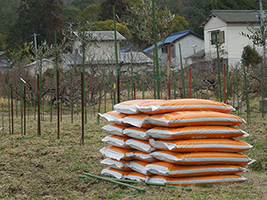
Fertilizer bags 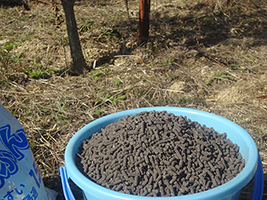
Fertilizer ready to go out 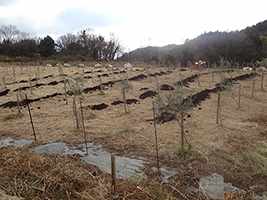
Spreading compost 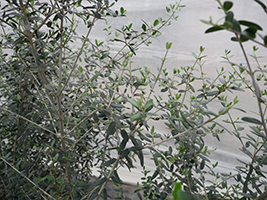
Sapling of olive in green house
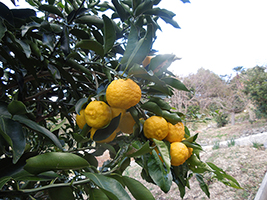
Yuzu citrus ready to be picked 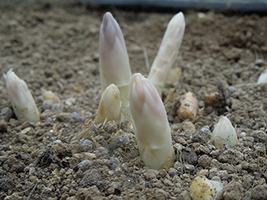
Asparagus peeking out of the soil 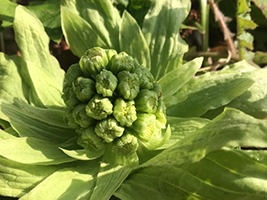
Butterbur sprout(wild vegetable) 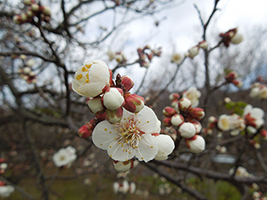
Ume plum blossoms
